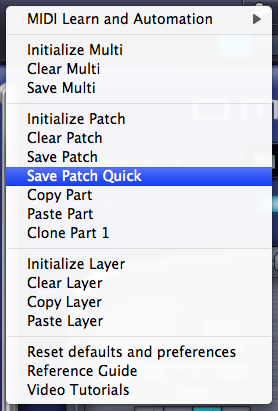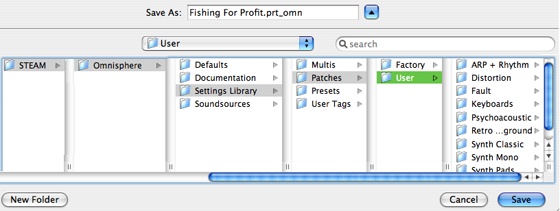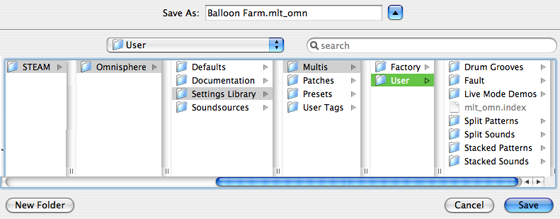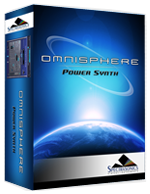BROWSER
– Saving & Managing Sounds

Omnisphere offers a very flexible way to manage custom Patches & Multis, for example, you can create custom collections of sounds organized by project or style. These can then be searched, selected or filtered using the features of the Browser.
The process of saving and managing custom Patches or Multis in Omnisphere is essentially identical, with the main difference being the locations of the user libraries that you create.
The best way to think of it is, at the top level you create Directories (or Libraries), under which you can organize your Patches into Categories.
Folders created at the top level will show up in the DIRECTORIES drop-down menu.
Subfolders created inside these will be displayed in the Category column of the Browser.
Saving Patches & Multis

Selecting the Save Patch (or Save Multi) option from the Utility Menu will open a File Save dialogue. After naming and saving the Patch or Multi, the EDIT TAGS interface will open, allowing you to assign various Attribute Types and Assignments, add custom Assignments, and add your own Keywords and Notes to the file.
Once you have finished editing the tags, click the SAVE button to finish saving the file. You may also cancel the save process by clicking the CANCEL button.
You must save Patches & Multis within the User folders, that is, you cannot save at the User folder level itself.
There is no need to press the "Refresh" button in the Browser after saving a new Patch or Multi.
NOTE: Patches & Multis must be saved into a Category folder inside the User folder. This folder can be in an existing user directory, a newly created sub-folder inside the User folder, or a new user directory.
Managing Patches & Multis

The Browser is designed to handle searching, browsing, loading and saving sounds.
User-created Patches or Multis are managed using your computer’s built-in file manager (either the Mac Finder, or the Windows Explorer). This makes it very easy to organize and manage your custom Patch and Multi Libraries, and structure them in any way that makes sense to you.
The default save location for Patches is inside a folder named "User" located at: ... /STEAM/Omnisphere/Settings Library/Patches/User.
The default save location for Multis is inside a folder named "User" located at: ... /STEAM/Omnisphere/Settings Library/Multis/User.
You can create additional folders at those locations and name them whatever you like. When you create a new folder at the top level (alongside the User folder), it will show up in the DIRECTORIES drop-down menu in the respective Browser.
NOTE: When you rename or create new folders at the top level, you must re-instantiate Omnisphere, and then select the Refresh button for them to appear correctly in Omnisphere's Browser.
In order to save a Patch or Multi, you must save it into a Category sub-folder within a User folder. If there are no existing subfolders inside a User folder, you can create a new one using your system’s file manager, or by using the File Save Dialogue while saving a Patch or Multi. You can then save your Patch or Multi into the new subfolder. You can create as many sub-folders as you like, and those sub-folders will be displayed as Categories in the Category column of the Browser.
Once you have created a user library, using Omnisphere’s File Directory browsing method will allow you to browse your Patches and Multis within their folders, just as they are located on your Hard Drive.
Renaming, Relocating and Deleting Patches & Multis

To rename, relocate or delete a user-saved Patch or Multi you must use the Mac Finder or Windows Explorer to do so. Navigate to the User folder, locate the desired files there, and rename, delete or relocate them using your file manager.





